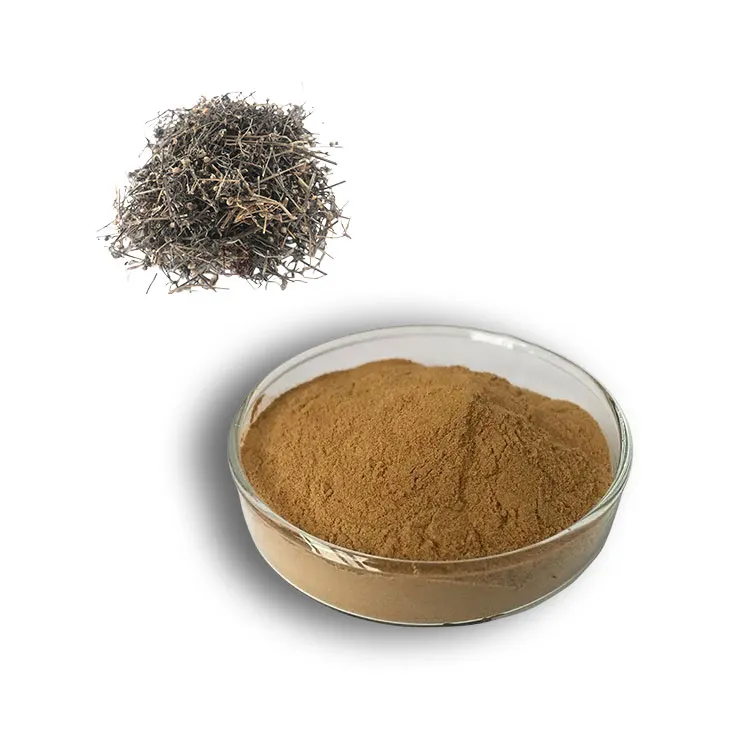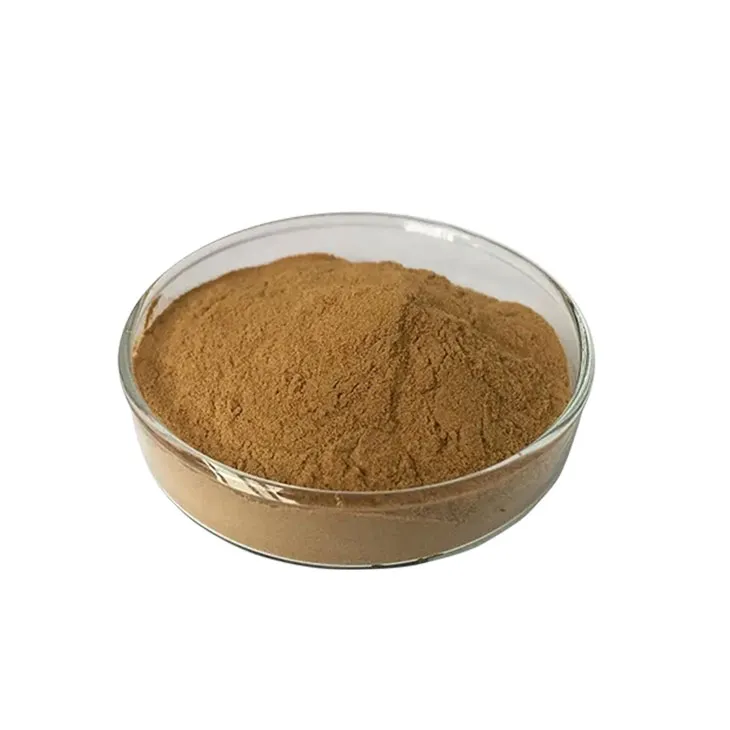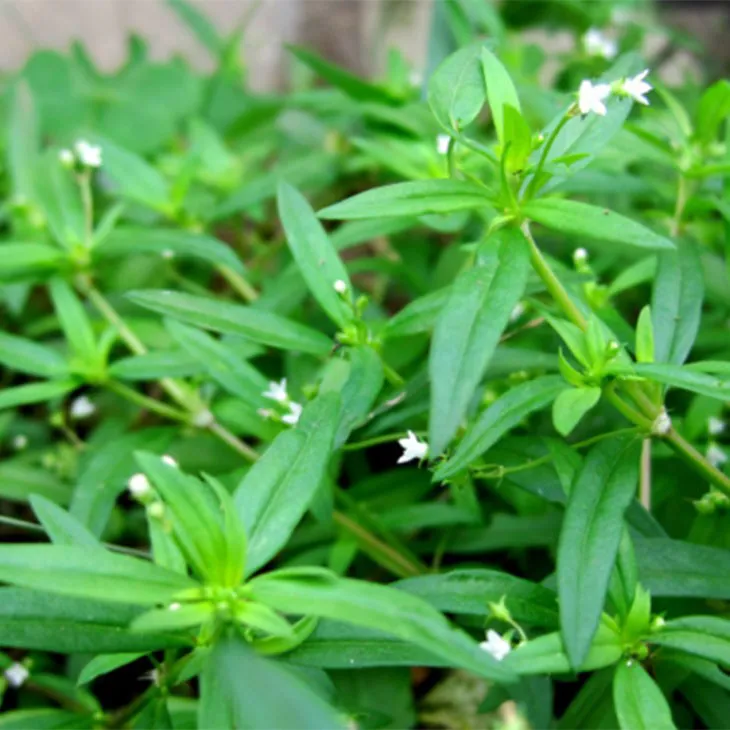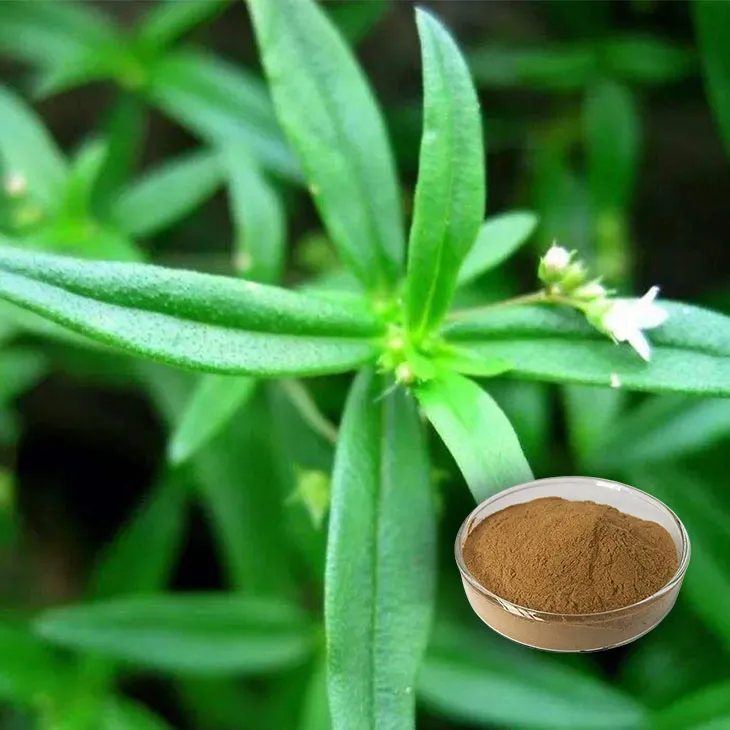- 0086-571-85302990
- sales@greenskybio.com
The Optimal Method for Extracting Hedyotis Diffusa Extract.
2024-11-28

1. Introduction
Hedyotis diffusa is a traditional Chinese medicinal herb that has been widely used for its various pharmacological activities, such as anti - inflammatory, anti - tumor, and antioxidant properties. Extracting high - quality Hedyotis Diffusa Extract is crucial for maximizing its medicinal benefits. However, the extraction process is complex and influenced by multiple factors. This article aims to comprehensively analyze the optimal method for extracting Hedyotis Diffusa Extract by considering different extraction techniques and key influencing factors.

2. Extraction Techniques
2.1. Soxhlet Extraction
Soxhlet extraction is a traditional and commonly used extraction method. In this method, the sample of Hedyotis diffusa is placed in a Soxhlet extractor. A suitable solvent, such as ethanol or methanol, is continuously refluxed through the sample. This continuous reflux process helps to dissolve the active components in the herb effectively.
Advantages of Soxhlet extraction include high extraction efficiency for some components and relatively simple equipment requirements. However, it also has some drawbacks. For example, it usually requires a long extraction time, which may lead to the degradation of some thermo - sensitive components. Additionally, the large amount of solvent used may increase the cost and pose environmental concerns.
2.2. Ultrasonic - Assisted Extraction
Ultrasonic - assisted extraction utilizes ultrasonic waves to enhance the extraction process. Ultrasonic waves can create cavitation bubbles in the solvent, which collapse and generate local high - pressure and high - temperature regions. These extreme conditions can break the cell walls of Hedyotis diffusa more effectively, facilitating the release of active components into the solvent.
Compared with Soxhlet extraction, ultrasonic - assisted extraction has the advantages of shorter extraction time and potentially higher extraction yield of some active components. It also requires less solvent, which is more environmentally friendly. However, the ultrasonic equipment needs proper maintenance, and the extraction efficiency may be affected by factors such as ultrasonic power and frequency.
2.3. Microwave - Assisted Extraction
Microwave - assisted extraction is another modern extraction technique. Microwaves can directly heat the sample and the solvent, causing the molecules to move more vigorously. This rapid heating can increase the solubility of the active components in Hedyotis diffusa and accelerate the extraction process.
The main advantages of microwave - assisted extraction are its high - speed extraction and relatively high extraction efficiency. It can also save energy and solvent. Nevertheless, the extraction process needs to be carefully controlled to avoid over - heating, which may cause the decomposition of some components. Moreover, the microwave equipment is relatively expensive.

3. Factors Influencing the Extraction Process
3.1. Temperature
Temperature plays a significant role in the extraction of Hedyotis Diffusa Extract. Different extraction techniques may have different optimal temperature ranges.
For Soxhlet extraction, increasing the temperature can generally enhance the solubility of the active components. However, as mentioned before, too high a temperature may lead to the degradation of thermo - sensitive components. In ultrasonic - assisted extraction, a suitable temperature can improve the cavitation effect. Usually, a moderate temperature range is preferred. For microwave - assisted extraction, precise control of temperature is crucial, as over - heating can be a problem. In general, an appropriate increase in temperature can accelerate the extraction process, but it must be balanced with the stability of the active components.
3.2. Solvent Choice
The choice of solvent is another critical factor. Different solvents have different solubility for the active components of Hedyotis diffusa.
- Ethanol is a commonly used solvent. It has good solubility for many active components in Hedyotis diffusa, and it is relatively safe and easy to obtain. Moreover, ethanol - based extracts are often more acceptable in pharmaceutical and food applications due to its relatively low toxicity.
- Methanol also has high solubility for some components, but it is more toxic than ethanol. Therefore, special safety precautions are required when using methanol as a solvent.
- Water can be used as a solvent, especially for extracting water - soluble components. However, the extraction efficiency for some lipophilic components may be low when using water alone. Sometimes, a combination of water and organic solvents can be used to improve the overall extraction efficiency.
3.3. Extraction Time
Extraction time affects the yield and quality of the Hedyotis diffusa extract.
In Soxhlet extraction, as mentioned earlier, the extraction time is usually long. Prolonged extraction time may increase the yield, but it also increases the risk of component degradation. In ultrasonic - assisted extraction and microwave - assisted extraction, shorter extraction times are generally possible compared to Soxhlet extraction. However, if the extraction time is too short, the active components may not be fully extracted. Therefore, it is necessary to determine the optimal extraction time for each extraction technique through experimental optimization.

4. Optimization of the Extraction Process
To obtain the optimal Hedyotis diffusa extract, it is necessary to optimize the extraction process considering all the above - mentioned factors.
First, the choice of extraction technique should be based on the specific requirements and available resources. For example, if high - throughput extraction is required and cost is not a major concern, microwave - assisted extraction may be a good choice. If simplicity and relatively low - cost equipment are preferred, Soxhlet extraction or ultrasonic - assisted extraction may be more suitable.
Second, for each selected extraction technique, the temperature, solvent, and extraction time need to be optimized. This can be achieved through experimental design methods such as response surface methodology or orthogonal design. These methods can help to determine the interaction between different factors and find the optimal combination of factors to maximize the extraction yield and quality of the active components.

5. Conclusion
In conclusion, the extraction of Hedyotis diffusa extract is a complex process that is influenced by multiple factors including extraction techniques, temperature, solvent choice, and extraction time. Each extraction technique has its own advantages and disadvantages, and different factors need to be carefully considered and optimized to obtain high - quality Hedyotis diffusa extract. By comprehensively understanding these factors and using appropriate optimization methods, it is possible to develop an optimal extraction method that can fully utilize the medicinal value of Hedyotis diffusa.
FAQ:
Question 1: What are the common extraction techniques for Hedyotis diffusa extract?
Some common extraction techniques for Hedyotis diffusa extract include solvent extraction, such as using ethanol or water as solvents. There is also microwave - assisted extraction and ultrasonic - assisted extraction. Solvent extraction is a traditional method. Microwave - assisted extraction can accelerate the extraction process by using microwave energy, and ultrasonic - assisted extraction utilizes ultrasonic waves to enhance the extraction efficiency.
Question 2: How does temperature affect the extraction of Hedyotis diffusa extract?
Temperature plays a crucial role in the extraction process. Generally, increasing the temperature can enhance the solubility of the active components in the solvent, which may lead to a higher extraction yield. However, if the temperature is too high, it may cause the degradation of some active components. So, an appropriate temperature range needs to be determined to balance the extraction efficiency and the integrity of the active ingredients.
Question 3: What are the characteristics of different solvents for extracting Hedyotis diffusa extract?
Ethanol is a commonly used solvent. It has good solubility for many active components in Hedyotis diffusa and is also relatively safe and easy to obtain. Water is another solvent option. It is a green and inexpensive solvent, but the extraction efficiency may be lower compared to ethanol for some components. Organic solvents other than ethanol may have different selectivity and solubility for different active substances in Hedyotis diffusa, but they may also bring some safety and environmental issues.
Question 4: How to determine the optimal extraction time for Hedyotis diffusa extract?
The optimal extraction time is usually determined through experimental research. Initially, short - term extraction may not fully extract the active components. As the extraction time increases, the extraction yield may gradually increase. However, after a certain period, the extraction yield may not increase significantly or may even decrease due to possible degradation or side reactions of the active components. Therefore, a series of extraction experiments with different time intervals are carried out, and then the extraction time corresponding to the highest extraction yield and the best quality of the extract is determined.
Question 5: Are there any other factors that need to be considered in the extraction of Hedyotis diffusa extract?
Yes, there are other factors. For example, the particle size of Hedyotis diffusa raw materials can affect the extraction. Smaller particle sizes generally increase the contact area between the raw materials and the solvent, which is beneficial to extraction. Also, the ratio of raw materials to solvent is an important factor. An appropriate ratio can ensure sufficient solvent to dissolve the active components, and too much or too little solvent may affect the extraction efficiency.
Related literature
- Optimization of the Extraction Process of Hedyotis diffusa Extract by Response Surface Methodology"
- "Comparative Study on Different Extraction Methods of Hedyotis diffusa Active Ingredients"
- "The Influence of Solvent and Temperature on the Quality of Hedyotis diffusa Extract"
- ▶ Hesperidin
- ▶ Citrus Bioflavonoids
- ▶ Plant Extract
- ▶ lycopene
- ▶ Diosmin
- ▶ Grape seed extract
- ▶ Sea buckthorn Juice Powder
- ▶ Fruit Juice Powder
- ▶ Hops Extract
- ▶ Artichoke Extract
- ▶ Mushroom extract
- ▶ Astaxanthin
- ▶ Green Tea Extract
- ▶ Curcumin
- ▶ Horse Chestnut Extract
- ▶ Other Product
- ▶ Boswellia Serrata Extract
- ▶ Resveratrol
- ▶ Marigold Extract
- ▶ Grape Leaf Extract
- ▶ New Product
- ▶ Aminolevulinic acid
- ▶ Cranberry Extract
- ▶ Red Yeast Rice
- ▶ Red Wine Extract
-
Saponin Extract
2024-11-28
-
Passionflower Extract
2024-11-28
-
Ginseng Root Extract
2024-11-28
-
Nettle leaf extract
2024-11-28
-
Curcuma Longa Extract
2024-11-28
-
Cat Claw Extract
2024-11-28
-
Eucommia Ulmoides Extract
2024-11-28
-
White Willow Bark Extract
2024-11-28
-
Green Tea Extract
2024-11-28
-
Withania Somnifera Extract
2024-11-28





















